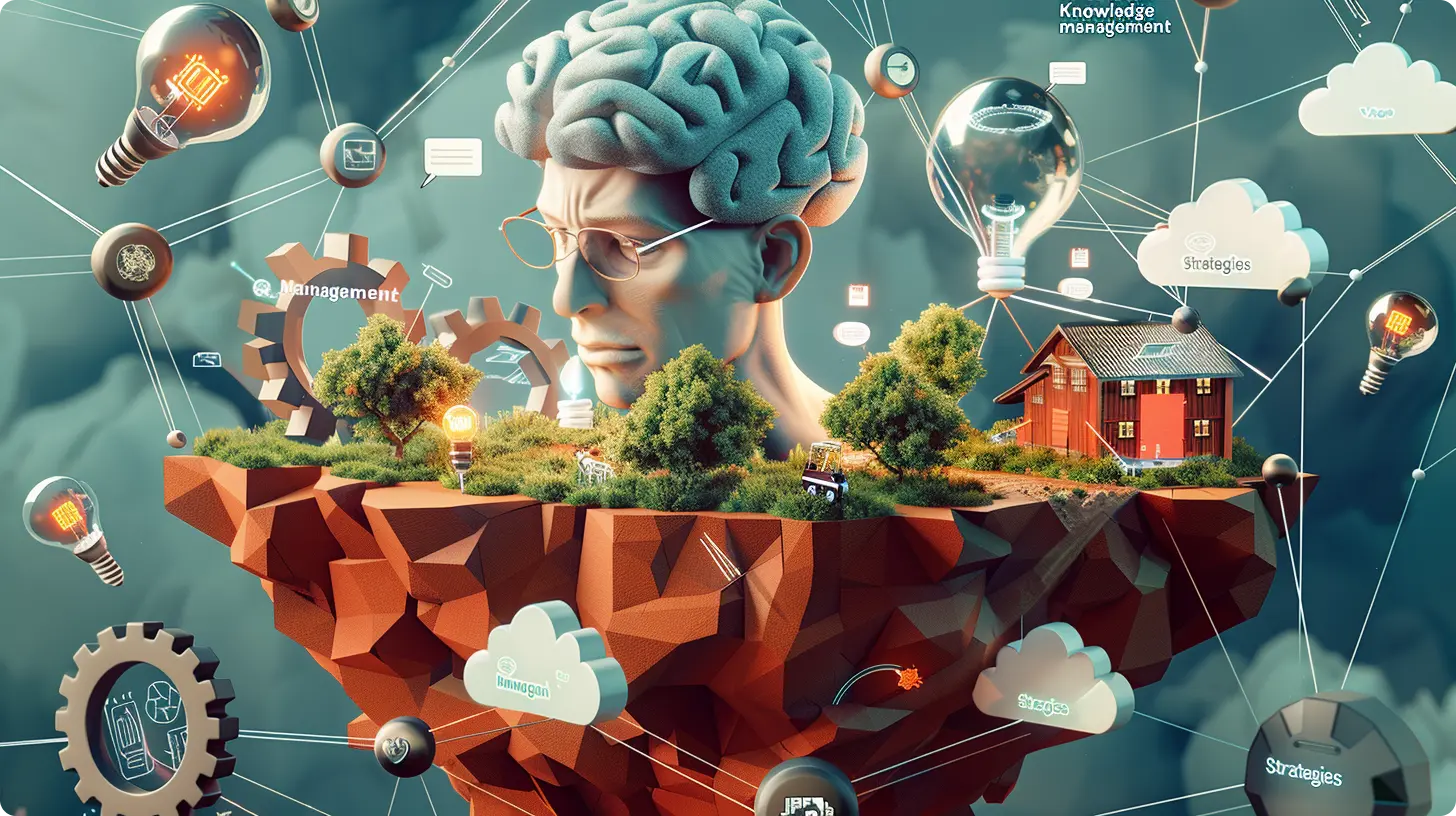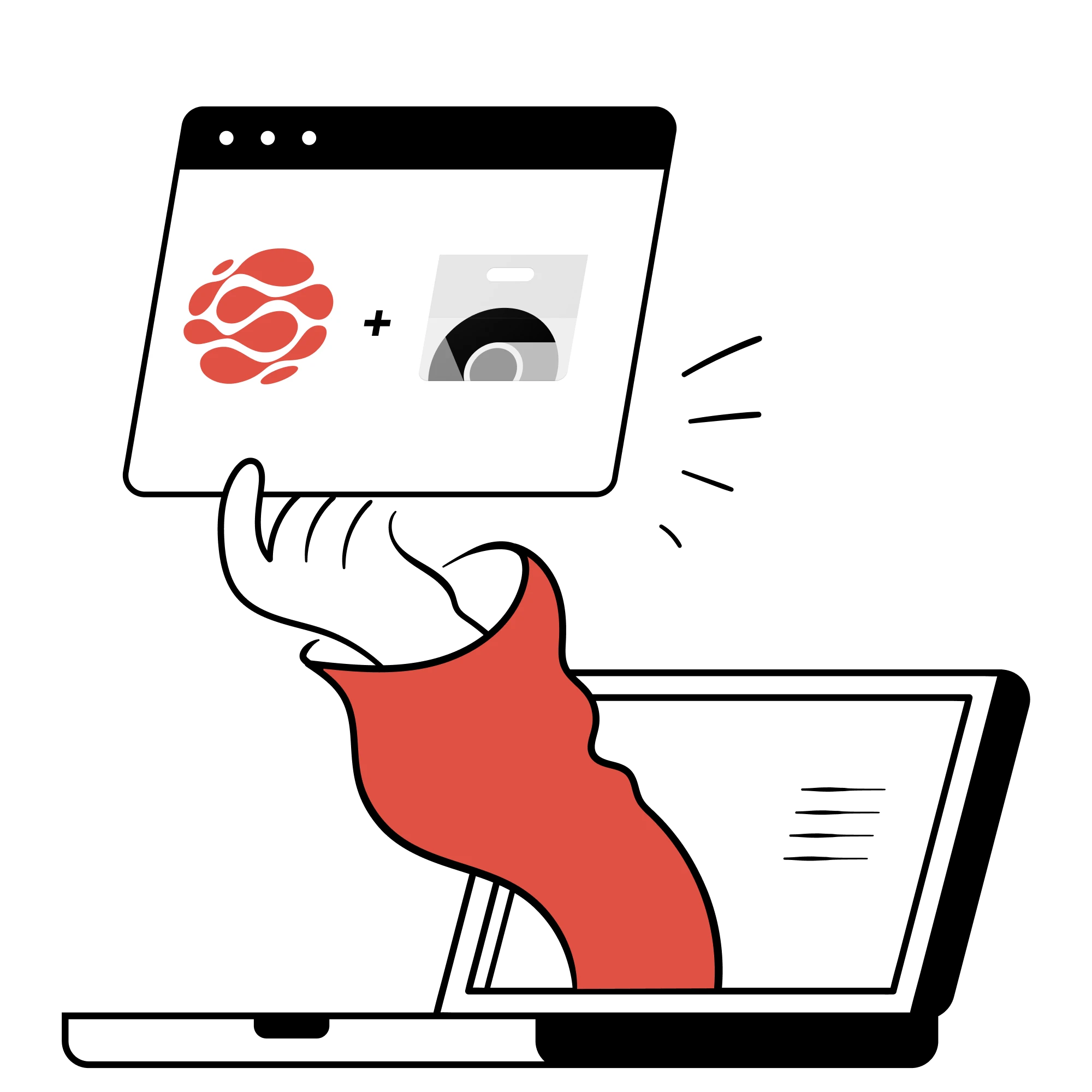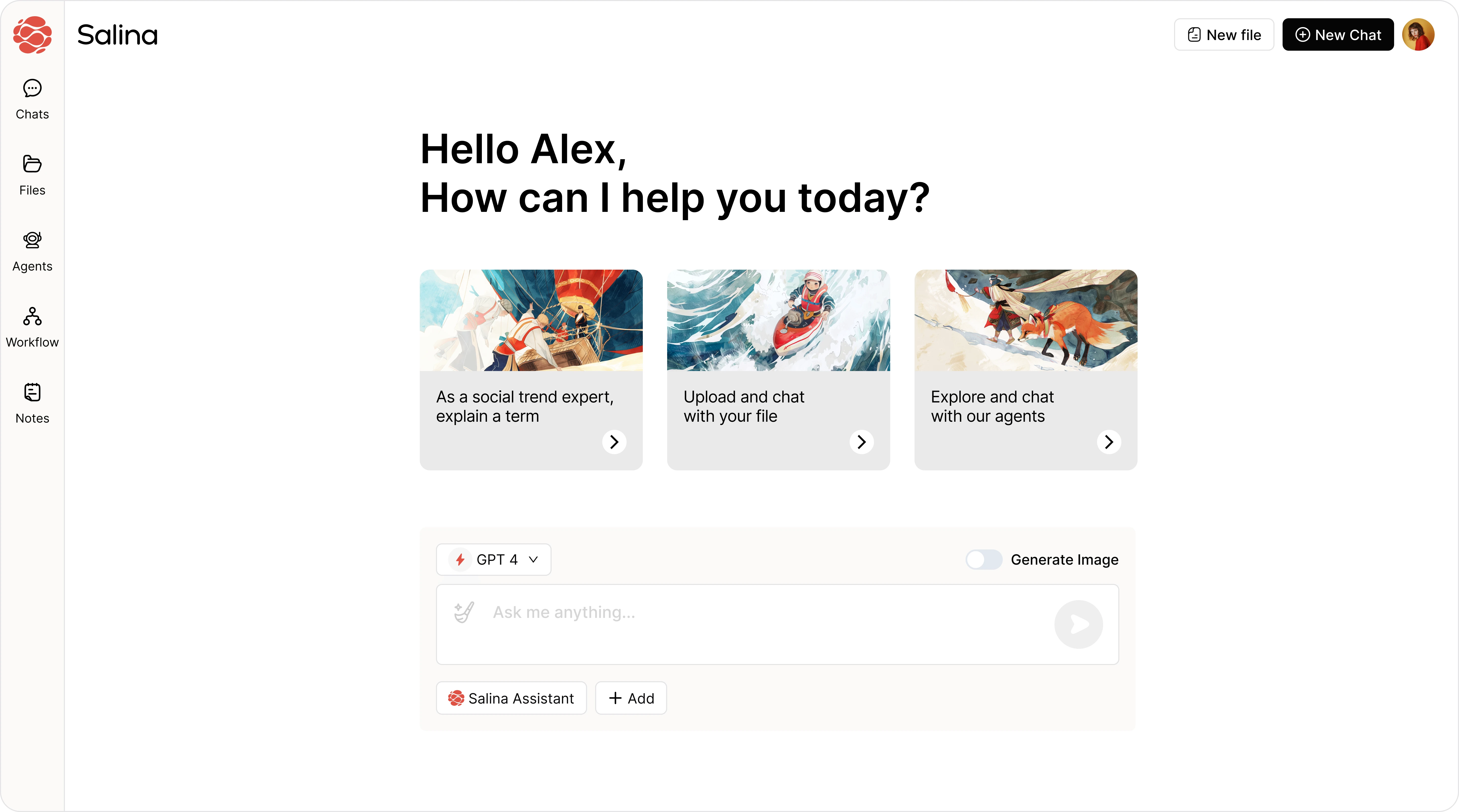
Improve workplace productivity and innovation with advanced knowledge management strategies. Discover how to use collective intelligence to enhance team performance and achieve success.
Just yesterday, the marketing team was scrambling to meet a deadline for a social media campaign. They desperately needed brand guidelines, target audience research, and past campaign materials to guide their strategy. Unfortunately, the information was scattered across various platforms, some outdated, others even contradictory. It was like searching for a needle in a haystack, wasting precious time and hindering their creativity.
This scenario plays out far too often in organizations with ineffective knowledge management. But what if, instead of this frantic search, the team had access to a centralized, well-organized knowledge base? This is where effective knowledge management comes in. By implementing these strategies, organizations can empower their teams, foster collaboration, and ultimately, achieve success.
What Is Knowledge Management?
Knowledge management (KM) is the process of creating, sharing, using, and managing the information and knowledge of an organization. It encompasses the strategies and practices used by an organization to identify, create, represent, distribute, and enable the adoption of insights and experiences. Simply put, KM is about ensuring that the right information gets to the right people at the right time.
Why You Need It?
Effective knowledge management is a non-negotiable for businesses today with 75% of companies that have adopted it witnessing a productivity boost of up to 40%. It is used to:
- Manage data overflow
- Ensure team access to crucial information
- Facilitate well-informed decision-making
- Address information silos
- Mitigate knowledge loss from employee turnover
- Cultivate a cohesive knowledge culture
With a clearer grasp of the importance of knowledge management and its application in today’s context, let’s explore effective strategies for its implementation.
6 Strategies for Effective Knowledge Management
Each of the six pillars outlined below contributes to a comprehensive knowledge management system that, when implemented correctly, can radically transform a company’s internal workings. Through practical applications and recommended resources, you’ll have a thorough understanding of not only why these pillars are important but how to bring them to life in your own organization.
1. Establish a Knowledge-Sharing Culture
Organizational culture is the foundation of effective knowledge management. Without a culture that values and fosters the sharing of ideas and information, any system or initiative implemented will struggle to succeed. This goes beyond simply encouraging employees to share; it’s about creating an environment that actively rewards and recognizes knowledge sharing.
Leadership Support
Leaders have a responsibility to set the tone for the entire organization. By ensuring that leaders are not only supportive but also active participants in knowledge sharing, a powerful precedent is set. Highlight the achievements of those who contribute valuable insights and provide them with platforms to showcase their knowledge.
Reward and Recognition
Formalize the recognition process by establishing programs that reward employees for sharing their know-how. This can come in the form of monetary incentives, additional vacation time, or other perks that align with your company’s values. The key is to demonstrate, tangibly and consistently, that knowledge sharing is vital to the organization’s success.
Sharing knowledge is not about giving people something or getting something from them. That is only valid for information sharing.
Sharing knowledge occurs when people are genuinely interested in helping one another develop new capacities for action; it is about creating learning processes.
Peter Senge, the founding chair of SoL (Society of Organizational Learning) and a Senior Lecturer of Sloan School of Management MIT
2. Implement a Robust Knowledge Management System (KMS)
A KMS is the technological backbone of your knowledge management strategy. It provides a framework through which knowledge can be structured, stored, and accessed by those who need it. When implemented effectively, a KMS can be a game-changer for productivity and collaboration.
Centralized Repository
Your KMS should act as a single source of truth. This means it should be accessible to all employees and have clear governance on what kind of knowledge is stored and how it is updated. The system should be intuitive and user-friendly to encourage regular use and updates from everyone in the company.
What is a central repository used for? Hewlett Packard Enterprise expounds on it best by hinging on these three main aspects:
- Collaboration: Central repositories streamline collaboration by ensuring all assets are centrally stored and updated, reducing duplication of work and keeping the team globally synchronized with the latest data and code versions.
- Boosted Visibility: A clear tracking system in central repositories increases visibility, allowing the team to access accurate insights and monitor changes to assets in real-time.
- Management of Dependencies: Central repositories offer immediate updates on changes, including dependencies, ensuring all assets are current and providing insight into the impact of changes across all data branches.
Searchability
One of the most significant advantages of a KMS is its ability to make vast amounts of information instantly accessible. Ensure that your KMS has robust search functionality, allowing anyone to find the information they need quickly and easily. Utilize metadata, tags, and other categorization tools to enhance the discoverability of knowledge assets.
Recommended Platforms for a Centralized Repository with the ability for search.
- Confluence by Atlassian
- Purpose: Designed as a powerful collaboration tool, Confluence is ideal for teams to create, share, and store documents in a structured way. It supports real-time collaboration and is integrated with Atlassian’s suite, including Jira, for enhanced project management and visibility.
- Best For: Teams looking for a comprehensive solution that not only acts as a knowledge repository but also integrates with project management and issue tracking systems.
- Microsoft SharePoint
- Purpose: SharePoint provides a highly customizable platform for document management and collaboration. It allows organizations to create websites as centralized repositories where documents can be stored, shared, and managed collaboratively.
- Best For: Large enterprises or organizations already using Microsoft 365, looking for deep integration with Office applications and advanced features like workflow automation and extensive customization.
- Glean: Rather than a centralized repository, Glean connects all your workspaces to facilitate search and knowledge discovery throughout your organization. By linking data, content, people, and interactions, you can search for information across various platforms like email and documents. Glean tailors answers to your identity, colleagues, and current tasks.
- Purpose: Connect your workspaces by breaking information silos. Glean uses AI to highlight relevant info from different platforms, enhancing communication, collaboration, and knowledge discovery in your organization.
- Best For: Companies deal with scattered information, but Glean excels at centralizing search and knowledge discovery. It helps teams find needed information quickly and efficiently, regardless of where it’s stored.
3. Foster Collaboration and Communication
No knowledge management system can operate in isolation; it must complement and support the existing communication and collaboration practices within an organization. By integrating KM into these practices, you can create a more cohesive and informed workforce.
Collaborative Tools
Tools like project management software, communication platforms, and shared document repositories are crucial for enabling collaboration and creating a shared knowledge environment. Ensure that these tools are integrated with your KMS to facilitate seamless information flow across different teams and projects.
Here are some AI tool suggestions to help you with the different aspects of KMS:
- AI Tools for Project Management
- Ayanza: Facilitates the entire project lifecycle management, enhances team coordination, and supports the achievement of clear objectives with its AI capabilities and a user-friendly interface for complex project and data analytics
- ClickUp: An all-encompassing project management solution that features AI assistance for optimizing workflow, task management, and collaboration across various systems including Google Drive and Slack. It is particularly suitable for any team type
- Taskade: Integrates GPT-4-powered AI for task tracking, project management, and collaboration. Features include an AI chat assistant, summarizer, and workflow generator among others, making it an excellent tool for team organization and deadline management
- AI Tools for Communication
- Tactiq.io: Offers real-time transcription for online meetings, providing summaries, and the generation of actionable items and agendas, thereby enhancing the clarity and efficiency of team communication
- (AI tool with communication and chat)
- AI Tools for Document Collaboration
- Bit.ai: An AI-driven platform that enables advanced document collaboration and management with features like robust searching, tracking, and integrated applications for a comprehensive workspace experience
Community of Practice
Communities of practice are informal groups of employees who share a common interest in a particular area of expertise. By establishing and nurturing these communities, you can enable deep knowledge sharing and establish best practices across the organization. These communities should have regular forums for discussion and a clear mandate to document and share their learnings.
The concept of a community of practice has been a longstanding strategy for achieving business success. Valuable insights on establishing a CoP are shared in a video by social learning experts Bev and Etienne Wenger-Trayner.
Centering on addressing a shared concern that resonates with individuals and aiming to resolve a common issue have been highlighted as crucial aspects. In the context of a Knowledge Management System (KMS) and a business, involving a collaborative community can significantly enhance the implementation of a system that effectively supports their work challenges.
4. Continuous Learning and Development
The only constant in business is change, and organizations need to maintain a commitment to learning to stay competitive. Knowledge management should facilitate continuous learning and development for all employees.
Training Programs
Develop and offer internal and external training programs for employees to learn new skills and industry best practices. These programs should be easily accessible through your KMS and cater to a range of learning styles and preferences. Encourage employees to be proactive in seeking out these opportunities for growth.
Training your employees and providing learning opportunities offer numerous benefits. Check out this brief video that emphasizes these advantages.
Knowledge Retention
When employees leave, they take their knowledge with them. To mitigate this loss, develop strategies to capture and retain critical knowledge. This might involve formalizing the documentation process, conducting exit interviews, or setting up mentorship programs to transfer knowledge from experienced employees to new hires.
Knowledge automation tools can provide instant support to employees, answering common questions and directing them to relevant resources. This not only saves time but also ensures that employees are guided in their search and storing of knowledge.
Here are some tools to help automate that process:
- Recall AI: Focuses on helping you summarize and save online content. It categorizes and organizes the information automatically and uses spaced repetition to aid learning. This technique involves reviewing information at spaced intervals to enhance long-term retention.
- Monica AI: A free Chrome extension that acts as an AI assistant, offering features like chat, search, writing, and translation. It can also process images, videos, and PDFs. Notably, it allows you to save various content into its “Memo” section and then chat with Monica to retrieve the information, making it a useful knowledge management tool.
5. Knowledge Audits and Assessments
Regular audits and assessments are necessary to ensure that your knowledge management system is effective and aligned with your organizational goals. By evaluating the system, you can identify areas for improvement and measure the impact of your KM initiatives.
Identify Gaps
Conduct regular audits to identify gaps in your organization’s knowledge. This process should be thorough and involve input from various stakeholders to get a holistic view of where information might be lacking or siloed.
Measure Impact
Use metrics such as reduced time to find information, increased employee satisfaction, and improved project outcomes to measure the success of your KM system. Collect feedback from employees through surveys or informal discussions to gain insights into their experience with the system.
For further insight into knowledge auditing, we look towards Patrick Lambe who is a globally recognized knowledge management practitioner, keynote speaker, facilitator, and author.
He has just released a book titled “The Principles of Knowledge Auditing.” Although we can’t review the book together at the moment, we can extract some insights from it by reading Synaptica LLC’s interview with him about this book.
6. Adapt and Evolve
The business world is constantly evolving, and so should your knowledge management strategies. It’s important to stay agile and be willing to adapt to changes in technology, market conditions, and organizational structures.
Feedback Loops
Create mechanisms for employees to give feedback on the knowledge management system. Incorporate user insights into the design and maintenance of your KMS to ensure it meets their needs and remains user-focused.
Stay Current
Keep an eye on the horizon for new KM tools, best practices, and technologies. Regularly review and update your KM strategy to take advantage of the latest advancements. Attend industry conferences, participate in webinars, and commission external audits to ensure your KM system remains cutting-edge.
Key Takeaways
- A robust Knowledge Management System (KMS) boosts collaboration, streamlines operations, and supports continuous learning.
- Implementing a Communities of Practice (CoP) strategy improves knowledge sharing and collaboration, fostering a more informed and cohesive organization.
- Continuous learning is vital for business competitiveness; offering training programs and encouraging employee growth yields numerous benefits.
- Knowledge automation tools offer instant support, answering queries and guiding employees to resources efficiently.
- Regular knowledge audits help identify gaps and assess system effectiveness, ensuring alignment with organizational goals.
Related Content:
What’s Next
In summary, effectively using Knowledge Management Systems involves a diverse approach. This includes maximizing and utilizing AI tools, creating communities of practice, and regularly evaluating through knowledge audits.
Looking ahead, the future of KM systems looks promising due to tech progress and increased recognition of their importance. Organizations that stay adaptable, adjusting KM strategies to utilize new tools and insights, will enhance their competitive edge and promote continuous learning and innovation. The focus shifts from just storing data to turning it into practical insights for strategic decisions and operational excellence.




